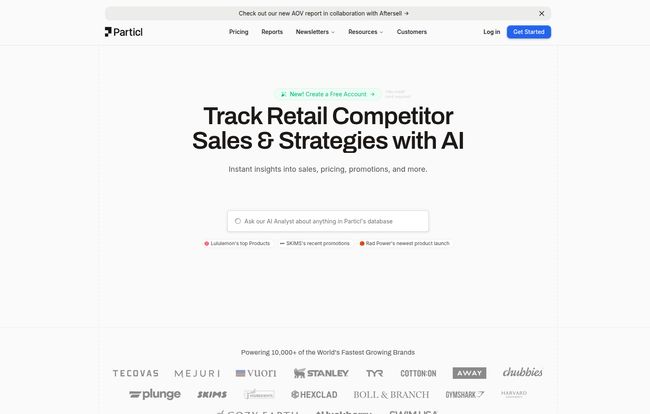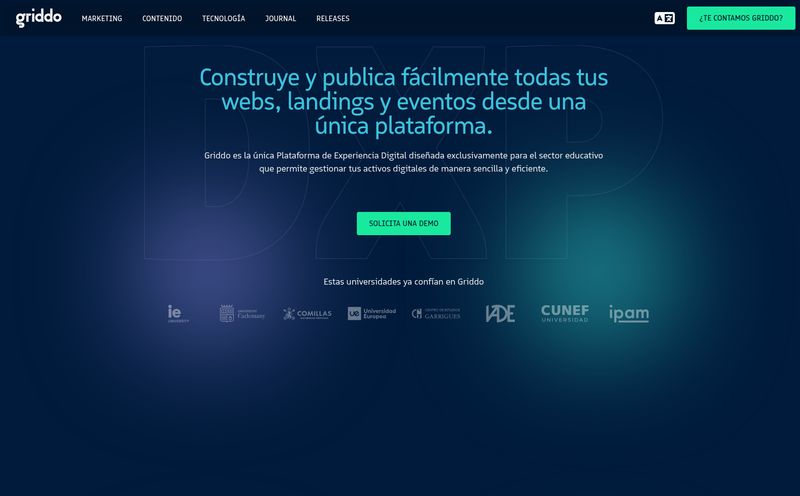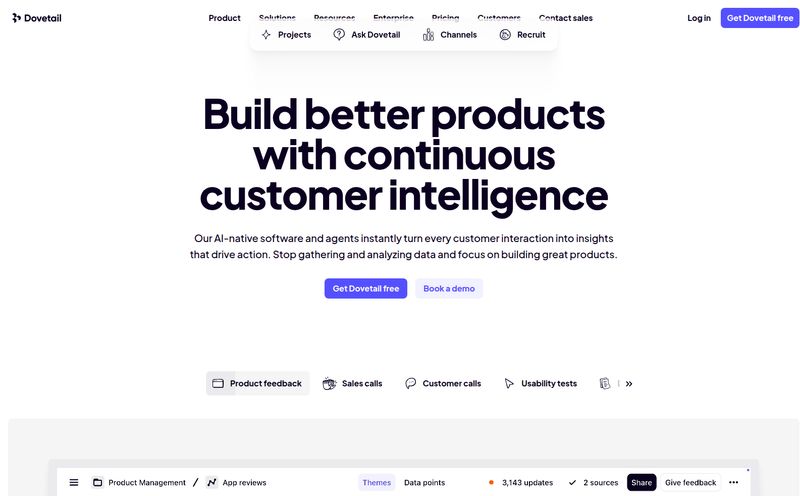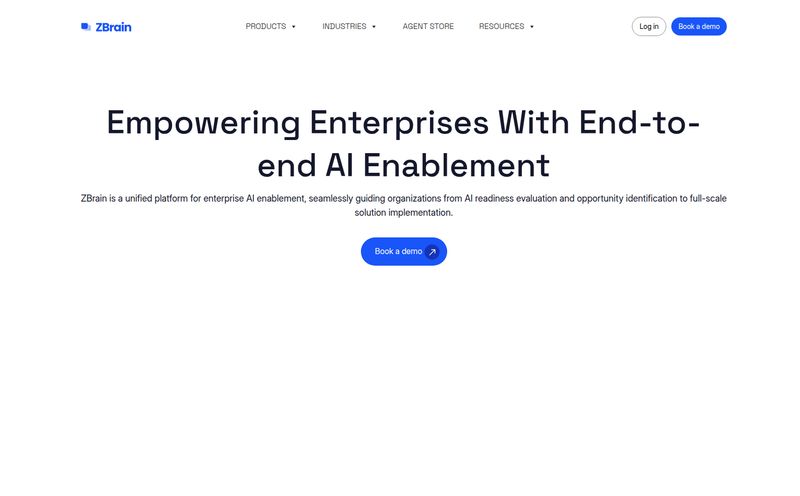I still get a little twitch in my eye when I think about the “old days” of competitor analysis. You know what I’m talking about. The sprawling, monster-sized spreadsheets with a dozen tabs. The weekly ritual of manually clicking through 15 different competitor websites, noting down every new product, every price drop, every flimsy “20% OFF!” banner. It was a soul-crushing, carpal-tunnel-inducing nightmare. And half the time, the data was out of date by the time you finished compiling it.
So when a tool like Particl comes along, promising to automate all that grunt work with a sprinkle of AI magic, my ears perk up. But let's be real, in the world of marketing tech, there’s a new “game-changing AI platform” every other week. Is this just another shiny object, or is it the real deal?
I’ve spent years in the trenches of SEO and traffic generation, and I’ve seen what separates the game-changers from the expensive dust-collectors. So, I’m going to give you my no-fluff, honest-to-goodness take on Particl. We'll look at what it actually does, who it’s for, and most importantly, whether it's worth your hard-earned cash.
So, What Exactly Is Particl?
Alright, let’s break it down. At its core, Particl is a competitor intelligence platform built specifically for the wild world of e-commerce. Think of it less as a spreadsheet and more as a periscope for your business. It lets you peek over the fence to see exactly what your competitors are up to—what they're selling, how they're pricing it, what’s flying off their virtual shelves, and what’s gathering dust.
It uses AI to automatically categorize products and analyze market data, which is a fancy way of saying it does the messy work of making sense of all the noise for you. It’s designed to help you answer those million-dollar questions: Are my prices competitive? Should I launch that new product line? What’s the next big trend in my niche? Instead of guessing, you get data. Clean, organized, actionable data.

Visit Particl
The Features That Actually Matter for Your Bottom Line
A long list of features is great for a landing page, but what actually moves the needle? I’ve dug through what Particl offers, and here are the bits that I, as a marketer, actually find interesting.
Competitor Tracking on Autopilot
This is the bread and butter. The platform boasts access to data from over 10,000 competitors. You tell it who to watch, and it does the rest. It’s like having an intern who never sleeps, never complains, and is obsessed with stalking your competition’s every move online. It monitors their product assortments, new arrivals, and promotional campaigns. For anyone who’s ever had to do this manually, the value here is immediately obvious. It frees up your time to think strategically instead of just collecting data. A huge win.
Market Research Without the Guesswork
I have a saying: “Your gut is a liar.” It’s great for telling you when you’re hungry, but it’s terrible for making six-figure business decisions. Particl aims to replace that guesswork with hard numbers. The assortment analysis and benchmarking features are huge here. You can directly compare your product catalog to your rivals. See where you overlap, where you have gaps, and where you might have an exclusive advantage. It’s about finding those little pockets of opportunity that your competitors have completely missed. That’s gold.
The AI Magic: What Does 'AI-Powered' Even Mean Here?
“AI-powered” is the new “organic” – a term so overused it’s almost lost all meaning. So what’s Particl’s AI actually doing? From what I can gather, its main job is smart categorization. It looks at millions of products across the web and understands them—style, color, type, etc.—so you can compare apples to apples. It’s the difference between seeing a list of 500 competing “black tops” and being able to instantly filter by V-neck, long-sleeve, or crop top. This AI layer is what turns a massive, overwhelming sea of data into identifiable trends and insights a human can actually use.
My Honest Take: The Good, The Bad, and The Pricey
No tool is perfect. Let's get into the nitty-gritty. This is where the rubber meets the road, and my experience tells me to always look for the trade-offs.
What I Genuinely Like About Particl
First off, the promise of real-time data and alerts is fantastic. In e-commerce, speed is everything. Knowing the moment a key competitor launches a surprise flash sale isn’t just cool; it allows you to react instantly instead of finding out a week later when your sales have tanked. I also appreciate the focus on visualization. Raw data is ugly and intimidating. Turning it into clean charts and graphs, as seen on their site, makes it accessible to people who aren’t data scientists. The potential to spot a pricing gap or a product opportunity just by looking at a graph is powerful. It democratizes data analysis for the whole team.
A Few Things to Keep in Mind
Now, for the reality check. The biggest catch I see is the feature-gating across different price plans. This is pretty standard for SaaS products, but you need to be aware of it. That killer feature you saw in a demo might be locked away in a plan that costs more than your monthly coffee budget. For example, access to “Signature sales data” is limited to the pricier plans. This is likely high-value, proprietary data, but it means you have to pay to play at the highest level.
Another point of caution: the lower-tier plans don't seem to include in-store, brick-and-mortar data. If you’re an omnichannel brand with a physical retail presence, this is a significant limitation. You'd be getting an incomplete picture of the market. Make sure the plan you're considering covers the data you actually need.
Let's Talk Money: Breaking Down Particl's Pricing
Ah, the pricing page. Where dreams meet reality. Particl uses a tiered structure, which is pretty common. Here's a quick look:
| Plan | Price (per month) | Best For |
|---|---|---|
| Basic | $0 | Individuals or solopreneurs just wanting to try it out. Very limited. |
| Starter | $250 | Serious small businesses ready to invest in data-driven growth. |
| Essential | $500 | Established brands with small teams needing deeper insights. |
| Growth | $1,000 | Scaling companies and larger teams that live and die by data. |
| Custom | Contact Us | Enterprises with unique needs and, well, a custom budget. |
Is it expensive? Depends on your perspective. If you compare $250 a month to a Netflix subscription, then yes. But if you compare it to the cost of one bad inventory decision or the salary of a full-time market analyst (which can easily be $60k+ a year), it suddenly looks a lot more reasonable. The bottom line is, a tool like this is an investment. If you use the insights to find one winning product or adjust your pricing strategy to increase margins by just a few percent, it could easily pay for itself many times over.
Who is Particl Really For? (And Who Should Probably Pass)
After looking everything over, I have a pretty clear picture of the ideal Particl customer. This tool is built for data-hungry e-commerce brands, product managers, and marketing teams who are in a dog-eat-dog competitive space. Think fashion, beauty, home goods, consumer electronics... niches where trends shift like the wind and pricing is a constant battle. If you're a brand like one of the ones they list—Mejuri, TKEES, Chubbies—this is squarely in your wheelhouse.
Who should probably sit this one out? If you're a small-time dropshipper on a shoestring budget, this is likely overkill. If you sell a completely unique, one-of-a-kind product with no direct competitors, the value proposition diminishes. And, as mentioned, if your business is 90% brick-and-mortar, you might find the e-commerce focus too narrow, at least on the lower plans.
Frequently Asked Questions about Particl
What is a 'Signature Competitor' mentioned in the pricing?
Based on their site, this seems to be a premium offering. While standard competitor tracking covers publicly available data like product assortments and pricing, "Signature" data likely refers to estimated sales volumes and performance metrics, providing a much deeper look into how well a competitor's products are actually selling.
Is the free plan actually useful or just a teaser?
It’s mostly a teaser, to be blunt. With tracking for only one competitor and very limited data, its main purpose is to let you get a feel for the interface and basic functionality. It's not a long-term solution for serious analysis, but it's a great, no-risk way to see if you even like the platform.
How does a tool like Particl get its data?
Platforms like this typically use a combination of advanced web crawlers and data scraping technology to systematically gather public information from e-commerce websites. For more advanced data like sales estimates, they often use sophisticated algorithms and data modeling based on things like product rankings, customer reviews, and other market signals.
Can I cancel my plan at any time?
Most SaaS companies operating on a monthly billing cycle, like Particl appears to, allow you to cancel at the end of your current billing period. However, you should always check the specific terms of service or their refund policy on the website before committing.
Is it hard to set up and use for a non-technical person?
Particl positions itself as being easy to use with powerful visualizations. The goal of platforms like this is to simplify complex data, so it should be accessible to marketers and business owners, not just data analysts. The free plan is the perfect way to test this for yourself.
The Final Word on Particl
So, is Particl the secret weapon you need? Maybe. In today's e-commerce arena, flying blind is no longer an option. Gut feelings and manual spreadsheets just cant keep up. Tools that provide automated, intelligent data are shifting from a “nice-to-have” luxury to a fundamental part of the modern marketing stack.
Particl appears to be a very strong contender in this space. It's not a magic bullet—you still have to have the business acumen to interpret the data and make smart decisions. But it’s a powerful weapon. It automates the drudgery and surfaces the insights, letting you focus on strategy. For the right kind of business, it could absolutely be the edge you’ve been looking for.
As always, do your own homework. Sign up for the free plan, poke around, and see if it feels right for you. But from where I'm sitting, it looks like a serious tool for serious sellers.



